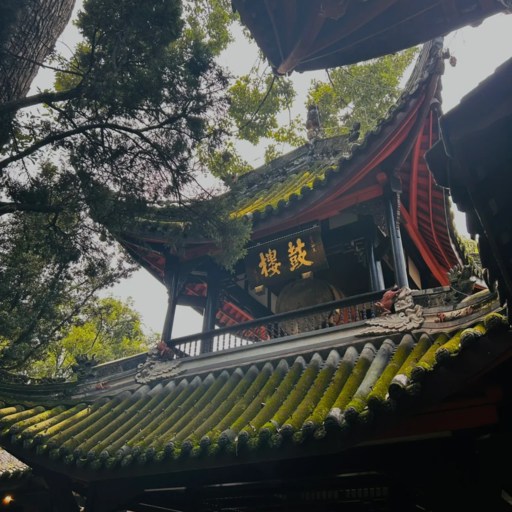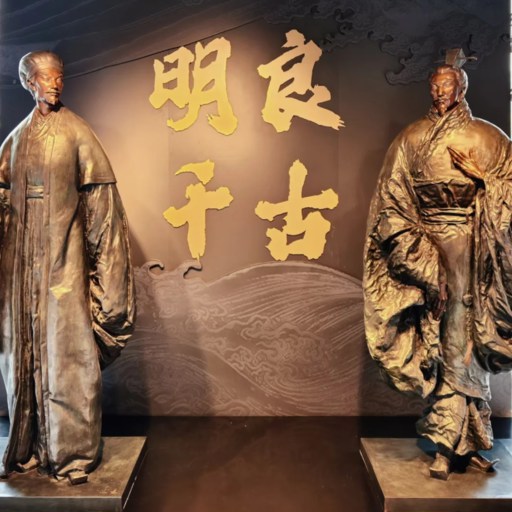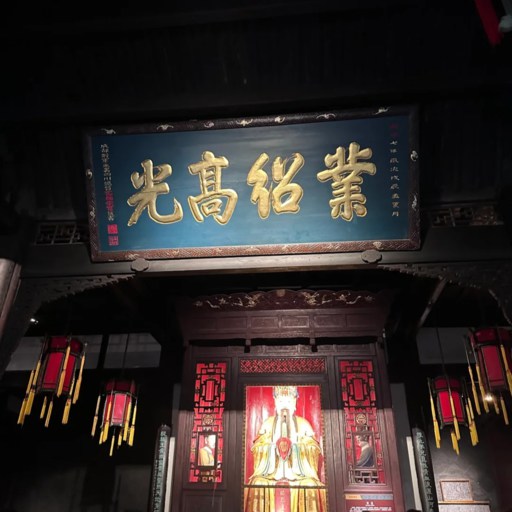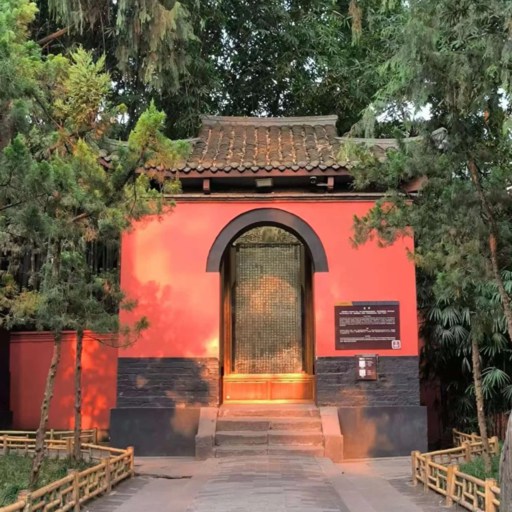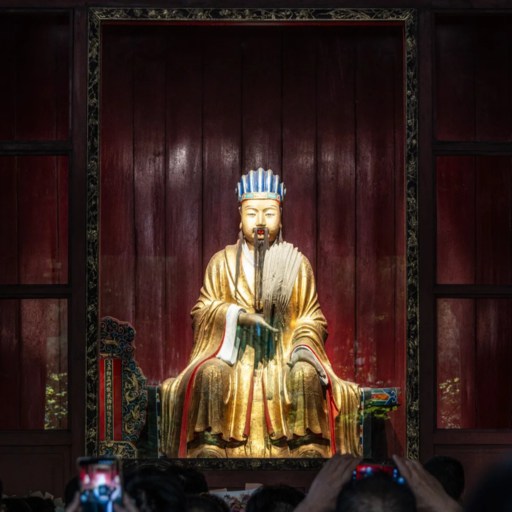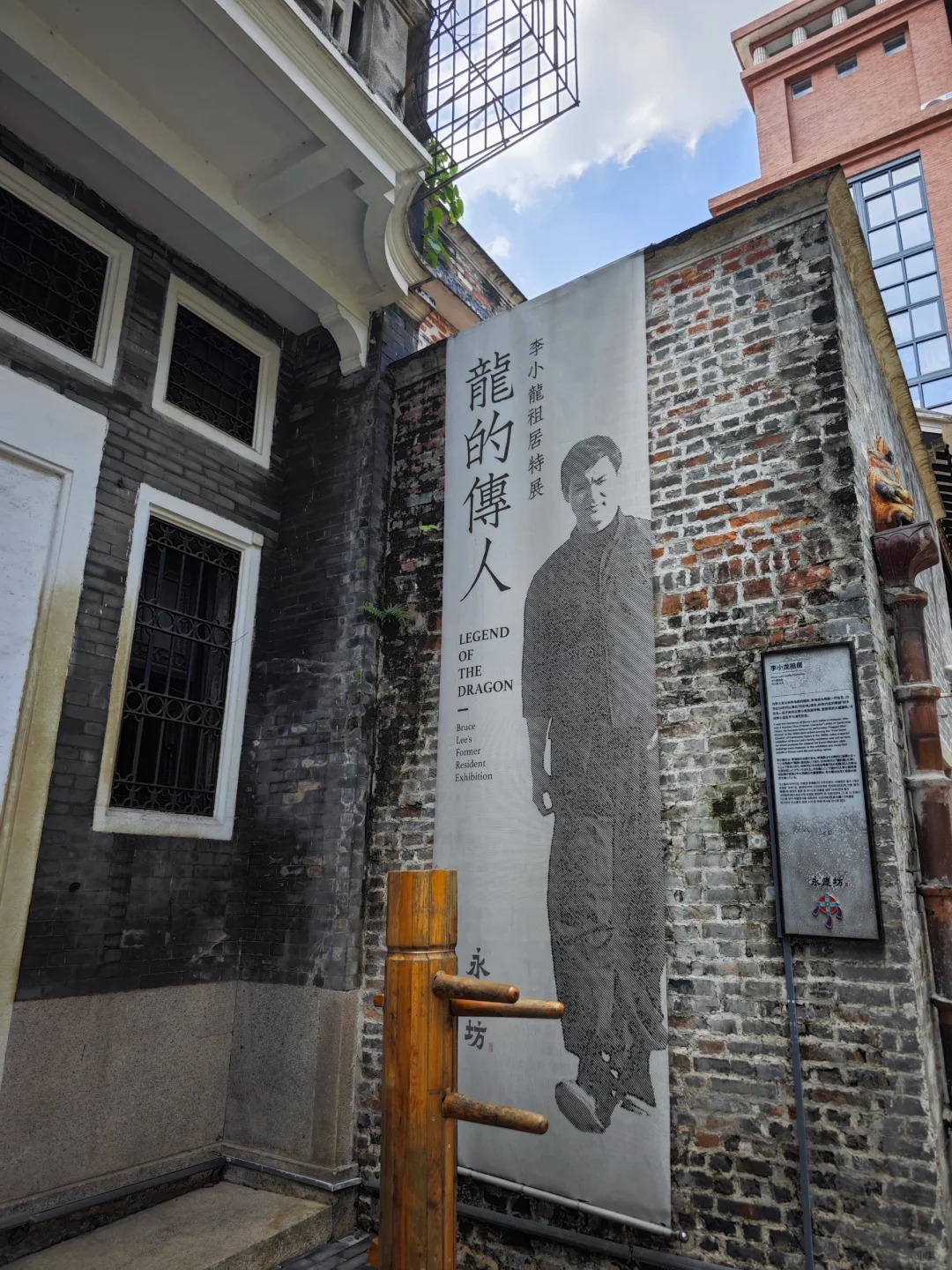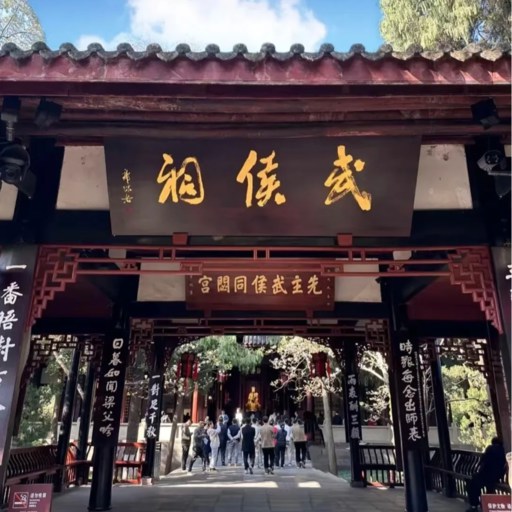
Wuhou Shrine
In the southern quarter of Chengdu, Wuhou Shrine sits in silence among the bamboo and temple bells. It’s not grand or crowded, but every room hums with stories of tenacity and wisdom. Both Zhuge Liang, the strategist of Shu Kingdom, and Emperor Liu Bei are enshrined here, a relationship close to two millennia old. The Temple of Marquis Wu still has a local nickname: “武侯祠.” People, with the friendliness you save for a really old mate.
Travelers arrive in search of the spirit of the Three Kingdoms, but they stay for the peace. Incense trickles over the fragrance of cypress, footsteps ring out on weathered stone. The ticket is about 50 RMB, but what you are actually purchasing is the calm and a sense that Chengdu’s past lives here still.
Quick Facts about Wuhou Shrine
| Name | Wuhou Shrine (武侯祠, Wuhou Temple Chengdu) |
| Location | 231 Wuhouci Street, Wuhou District, Chengdu |
| Opening Hours | 8:00 AM – 6:30 PM (last entry 6:00 PM) |
| Ticket Price | 50 RMB (free for children under 6) |
| Suggested Visit Duration | 1.5–2 hours |
| How to Get There | Metro Line 3 → Gaoshengqiao Station → 10-min walk |
| Nearby Spots | Jinli Ancient Street, Chengdu Museum, Sichuan Opera Theater |
What Makes Wuhou Shrine Special
- Drum Tower in Wuhou Shrine
- Sculptures in Wuhou Shrine
From Liu Bei’s Shrine to Wuhou Temple
When Chinese people speak of Wuhou Shrine, they recall not one but two heroes — Liu Bei and Zhuge Liang. Their brotherhood became a timeless symbol of loyalty in the Kingdom of Shu during the Three Kingdoms era. After Liu Bei died in 223 AD, his followers built a small shrine beside his grave mound to honor their fallen master. Decades later, Zhuge Liang, his devoted chancellor, was buried nearby. Over time, both were worshiped together in one complex — a rare Chinese tradition called “君臣合祀” or the joint enshrinement of ruler and minister.
The name “Wuhou” (武侯) comes from Zhuge Liang’s title, Marquis of Wu District, granted for his brilliance and military success. Locals once called this place Zhaolie Temple, after Liu Bei’s posthumous title, Emperor Zhaolie. During the Tang Dynasty, the two temples merged into one grand complex. It became more than a memorial; it turned into a living cultural emblem of loyalty and wisdom — virtues still cherished today. You can sense it in every courtyard, every engraved stele, and every leaning cypress bending over stone paths as if bowing to centuries of devotion.
Rebuilding Through Dynasties
A Wuhou Shrine Museum, like so many ancient sites in China, has cycled through destruction and renewal. During the late Tang and throughout the Song period, later Ming and Qing emperors also expanded the temple. Each dynasty’s mark is left — different calligraphy styles, carving details, even slight adjustments to the curve of the roof. The most famous artifact from this development perhaps is the carved during Tang times “San Jue Bei” or Triple-Success Stele. It is known as “threefold perfection” because the text, handwriting and stone engraving were all masterpieces created by three different masters.
In front of them, in person — you will see that from the way its blackened surface seems to throw back dim light; time has not erased the poetry in each brushstroke. What irks the scholars who call Wuhou Temple Chengdu “the most complete shrine of the Three Kingdoms” is this continuity — it did not survive only in repairs, but also as an act of remembering. People kept returning, rebuilding, rewriting. That is how the temple survives: some stone, some faith and more than a little of the willful Chengdu spirit that won’t see history crumple.
Local Perspective — What Chengdu Locals Think
Ask Chengdu locals and they will say, “go when sun’s low.” They mean late afternoon, when shadows stretch and the cypress scent deepens. On TripAdvisor, most foreign visitors have described Wuhou Shrine as “calm,” “educational” and “shaded” — three words that speak volumes about why it gets around 4.4 out of 5 on the site. Locals on Mafengwo use another: 安静得像会说话的老房子, “so quiet it almost speaks.” They’re not coming for big monuments but to sense the history inhaled slowly.
I spoke with a retired teacher who was doing some sketching near the back courtyard one time. The shrine somehow keeps Chengdu real, a reminder that wisdom does not scream. Perhaps that is why visitors end up staying longer than they expected. Between the rustle of bamboo and the old-wood smell, it’s hard to say where the past ends and the city begins — and that, more than any statue, is what makes this place special.
The Spirit of Loyalty and Wisdom
There’s something unorthodox about Wuhou Shrine — it is dedicated not to one man. Here, emperor and minister, master and scholar; Liu Ba’I ZHUGE Liang sit together with heads touching. It is that kind of joint worship, rare in Chinese history, a silent symbol of trust that continues to touch people across the centuries. Walk past the red-lacquered gates and you’ll catch a faint hint of sandalwood; the air is heavy with low temple bells. A light wind skims through high bamboo and rattles the leaves like whispers between old friends. Somewhere beyond the haze of incense, you can almost imagine the strategist’s calm face, already thinking two moves ahead.
We know little about their loyalty beyond the so-called Three Kingdoms history, half factual account and half mythic romance, but to stand here turns them into something palpable. Stone steles are inscribed with lines from The Memorial of Departure; the brushstrokes seem alive, as if Zhuge Liang has just set his pen down. Often, locals come by and leave folded notes in place of flowers; they are thank-yous from men and women who say the messages inspired them to be wiser or braver. Small, human touches like that one are what make the Wuhou Shrine Museum seem somewhat less a relic and more a living heart of Chengdu.
Things to See at Wuhou Shrine
- Liu Bei’s Hall
- Triple-Success Stele
- Zhuge Liang Hall
Liu Bei’s Hall — Where the King Sleeps
Each visit to Wuhou Shrine is a solemn occasion, no where more so than in Liu Bei’s Hall (一盖亭), also historically referred to as Zhaolie Temple (昭烈庙). The hall, at the center of the complex, is bordered by long red columns and has an indistinct scent of sandalwood. Inside, the emperor’s statue looms forward, with his robe painted in rich ochre and gold. A scroll on the wall behind him bears an inscription saying “永垂不朽” — May His Name Endure Forever. I once visited and stood next to an old man burning incense there; he bowed three times, murmuring something under his breath before pressing his palms together for a moment too long. It was like more than ritual — it was also a quiet conversation with time.
The atmosphere is heavy with piety, and even if you’re not religious, it’s difficult to resist. The snap of wooden fish clacking contrasts with temple bells ringing outside, and dust motes waft through the afternoon sunlight. A lot of visitors stay, for a moment or longer — could it be that Liu Bei’s story (of failure and fidelity) still resonates with anyone who has tried and fallen?
Zhuge Liang Hall — Wisdom That Endures
A brief walk to the north brings you to Zhuge Liang Hall, the shrine’s lifeblood and why so many people visit Chengdu Wuhou Shrine at all. The hall is shadowed with dim light; candles play off the polished bronze, illumining the calm face of the strategist. The air smells of melted wax and wet bamboo, so that if you listen intently you can hear the wind beating through the bamboo grove outside, as it were sighs. Above his statue is the famous couplet: “鞠躬尽瘁,死而后已” — To offer everything until death.
It is easy to understand how this person, whose nickname was Wolong or the Sleeping Dragon, has become a timeless paragon of wisdom and devotion. He still shapes Chinese thoughts of integrity and strategy. Not only if you go, will the hall’s guide panel include quotes from the Wuhou Shrine Museum archives. The hall does not speak to you; it wanders after, and, for a while that should blur reality and tradition, we are quiet. All you have left is the candlelight when you think about it, and it feels like it understands but doesn’t say it back.
San Jue Bei and Hidden Corners
Beyond the courtyards is one of the temple’s quiet treasures, the San Jue Bei or Triple-Success Stele. It is not prominent, but it is three perfects: poem, calligraphy, and engraving Tang script twists soft into characters, their edges chipped by centuries of touch. Nearby, the Stele Corridor makes a long line of history drawn in stone. If you move along, you feel the cold from the carved letters seeping into your skin. To the back, a small museum of bronze swords, bamboo slips, and relics out of Shu-era tombs reminds you that Wuhou Temple is a tomb as well as a temple. Few come here; the main buildings stop them. Don’t. Ponds ripple where koi move under willows, and you can see the reflection of red walls giving redness until it disappears. Skip this; you’ll overlook the shrine’s most peaceful moment when history breathes out.
How to Visit Wuhou Shrine — Routes & Maps
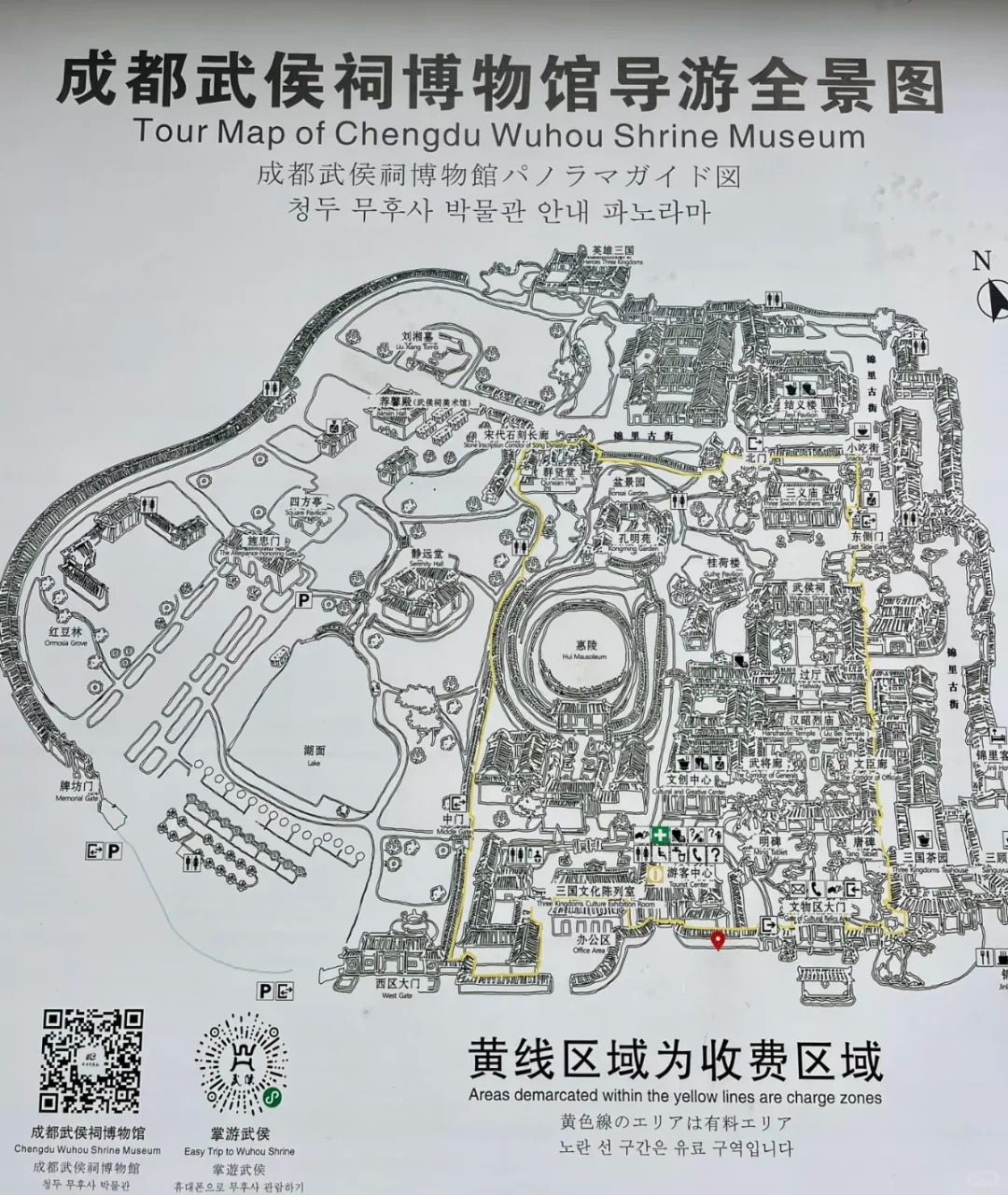
Tour Map of Wuhou Shrine
Getting There (Metro Line 3 & West Route)
It’s shockingly easy to make your way to Wuhou Shrine Map, so long as you’re using the right apps. (Forget Google Maps — it hardly registers around here.) (Instead, use Baidu Maps (百度地图) or Amap (高德地图); both have English navigation and even metro voice prompts.) At Tianfu Square, take Metro Line 3 toward Shuangliu Airport and exit at Gaoshengqiao Station, Exit B. From there, walk ten minutes up tree-lined Wuhouci Street, where tearooms play old Chengdu music. If leaving from Chunxi Road, the same metro line takes about 20 minutes and costs around 3 RMB — smooth, cheap, and air-conditioned.
For those on the western sightseeing route (西郊线), linking attractions like Sichuan Museum and Du Fu Thatched Cottage, the No. 335 bus offers a direct ride. It stops right at Wuhouci Stop, beside the entrance. If you take a taxi or Didi, expect to pay about 15–20 RMB from downtown without heavy traffic. Just show the driver “武侯祠,” and they’ll understand. Chengdu drivers rarely overcharge, but keep your WeChat Pay or Alipay Tour Card ready since cash is now uncommon.
Inside the Shrine — Recommended Route
Here, as soon as you get in the main gate, that’s where a real Wuhou Shrine Guide starts. The first stop after entering from the South Gate is Liu Bei Hall, where his statue stands amid curling incense smoke. Nearby, locals bow three times before entering Zhuge Liang Hall to see the strategist’s figurine glowing softly inside. From there, continue to Sanyi Temple, dedicated to Liu Bei, Guan Yu, and Zhang Fei — oath brothers immortalized in every Chinese child’s storybook. Purchase tickets here for a smooth visit.
The suggested walk forms a circular route of about 1.5 kilometers, easily done in ninety minutes with slow pacing. Don’t miss the Ancient Cypress Grove, where resin and moss scent the air, and filtered light through old branches makes perfect photos. Farther back lies the Stele Corridor, where hundreds of stone tablets record fragments of history. Each stone feels cool under your fingertips, names carved deep by long-gone artists. End at the serene Garden and Tomb Area, where Wuhou Shrine fades into bamboo rustles and distant bells. The best photo time is after 4 p.m., when golden light paints the red walls — a small, perfect Chengdu moment.
Wuhou Shrine and Jinli Ancient Street
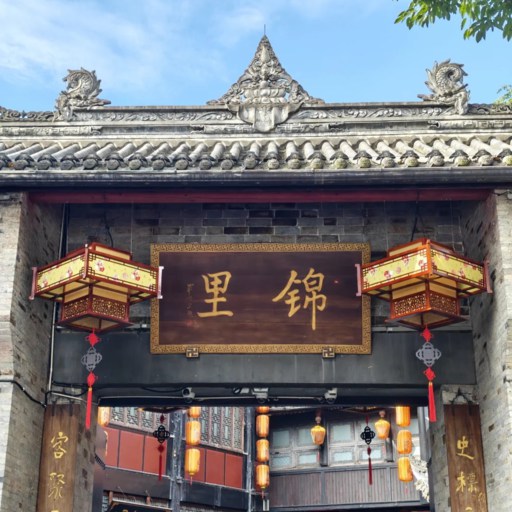
Jinli Street
Seamless Cultural Pairing
Few spots in Chengdu merge as organically as Wuhou Shrine and Jinli Street. The shrine’s back gate lets out onto a lantern-lit world of red and gold, Jinli’s narrow streets nearly burning in the torchlight. It feels almost cinematic, the shift from the hushed incense air to chatter and sizzling woks, scent of malt sugar curling out of a tanghua (糖画) stall. Street performers paint syrup dragons on slabs of marble, tea houses thrum with ambient Sichuan opera music.
“It felt like Kyoto but with more life,” said a traveler I met from the U.K. I knew what he meant — the wood-and-paper façades, the dainty bridges, the history that clings to everything — but there’s extra energy here, a lot more laughter. Residents sip jasmine tea by open windows; children go chasing bubbles while browsing through souvenir stores. You can still feel an echo of Wuhou Shrine Chengdu, as if its peaceful presence remains hidden beneath the ruckus of Jinli. The two sites share a pulse: one of loyalty, the other of living culture. If you’re keen on exploring more of Chengdu’s rich cultural heritage, you can discover the best travel tips here.
Tips — Eat, Rest and Shop Nearby
And if your stomach rumbles, just look for the scent of chili and sesame oil.” Pick up a bowl of dandan noodles for 15 RMB or so, or a san da pao (sticky rice balls slung against a drum) for around 10 RMB. Many stores, including those that are part of the Tour Pass feature for foreign cards, accept Alipay and WeChat Pay. Cash is fine, too, but digital payment saves time when the crowd expands.
For souvenirs, forget the plastic trinkets and look instead for wooden opera masks or paper Zhuge Liang fans — they fold neatly inside a daypack. When you need a break, take a seat in one of Jinli’s teahouses on the riverside; Wuhou Shrine Chengdu’s south wall is mere meters away, and the hum of the temple bell wafts across at times. It’s a reminder that Chengdu doesn’t break old and new apart, but lets them have tea together. If you're looking for more spots like these, check out the best Chengdu attractions here.
FAQ about Wuhou Shrine
Q: What is the meaning of Wuhou Shrine in Chinese?
Wuhou Shrine Wuhou Shrine, 武侯祠 in Chinese, is dedicated to the memory of Zhuge Liang who was called Wuhou (武侯) or Marquis of Wu when alive. It is this title which testifies to his military genius and strategic wisdom, that won over the hearts of people. The temple is mainly dedicated for paying respect to Zhuge Liang and the Emperor Liu Bei, making it a double sacred place.
Q: How long to spend at Wuhou Shrine?
It’s a good idea to budget approximately 1.5–2 hours for Wuhou Shrine. This gives you time to also visit the main halls, venture into the Wuhou Shrine Museum and walk in Jinli Street outside. If you are interested in history or photography, perhaps you will need some more time to immerse into its fine carvings and serene courtyards.
Q: What is the ticket price for Wuhou Shrine?
Standard admission to Wuhou Shrine costs 50 RMB (as of 2025). Remember, it’s always a good idea to check if there are any discounts or special pricing happening, especially during the off-season. You can also buy your tickets in advance on third-party platforms like Trip. com for convenience.
Q: What are Wuhou Shrine opening hours?
Wuhou Shrine is open every day 08:00 to 18:30, with summer hours until 19:00. The temple is often crowded around lunchtime, so we recommend going later in the afternoon or early in morning to avoid crowds.
Q:Why was Wuhou important in Chinese history?
Wuhou Shrine is an important landmark because it is dedicated to Zhuge Liang, known for his wisdom and loyalty. Minister Of The Shu A minister and military strategist in the service of Shu Emperor Liu Bei, Zhuge Liang is revered for his loyalty to the kingdom, uncanny genius, and incredible foresight. At Wuhou Shrine aswell, his ghost lives on with the presence of loyalty and intelligence.
Q:What should I not miss at Wuhou Shrine?
While at Wuhou Shrine, be sure to see the San Jue Bei (Three Perfections Stele) — one of the oldest and most revered objects in the shrine. Other must-visits include the Liu Bei Hall and the Bamboo Grove Courtyard, where you’re greeted with an entirely different environment from that of bustling Chengdu out on the streets.
Q:Is Wuhou Shrine near Jinli Street?
Yes, Wuhou Shrine and Jinli Street are indeed very close to each other - approximately 200 meters distance. The back gate to the shrine opens onto the street, so it’s a great place to continue your exploration. You can easily do both places in one visit, the tranquil nature of the shrine and then Jinli’s lively experience.
Q: Are there English guides available?
Yes, there is English audio guide available in the Wuhou Shrine via Alipay Mini Program. Just scan the QR code on entry or download the app for an enriched visit with historical information and full explanations about the artifacts, halls, and icons.
